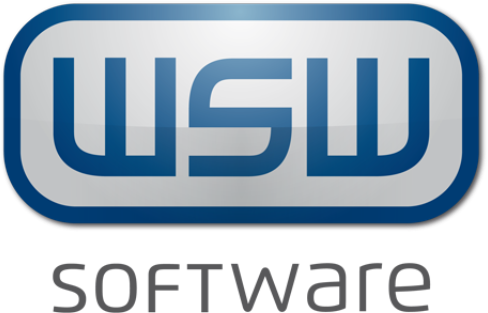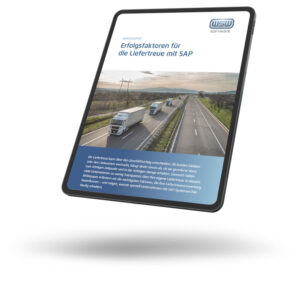Deliveries of goods from Germany to another EU country are intra-Community deliveries. Such deliveries within the EU are exempt from VAT under certain conditions, according to § 4 of the German VAT Act (UStG). For this to be valid, the foreign customer must be entitled to deduct input tax and have a VAT ID number. For the VAT exemption of goods deliveries to other EU countries, proof of receipt (actual delivery) must be provided after delivery has been made to the recipient. This measure was introduced by the tax authorities in particular to minimize the risk of VAT fraud. Accordingly, companies must obtain a confirmation of arrival in order to be able to invoice the delivery to the customer without VAT. In the event of audits by the tax authorities, this proof must be able to be presented.
Background
The protest of the business community regarding the time-consuming verification requirements for VAT-exempt deliveries to other EU countries at the beginning of the 2010s led to a selective simplification of the regulations. In the case of own transport by the supplier and transport by third parties, the changes compared to previous proof regulations are minor.
The biggest change concerns the self-collectors. Here, a document from the collector about the delivery made is necessary, which is issued only after the transport. An intention to ship at the time of collection is no longer sufficient. However, a distinction is still made between transport cases and dispatch cases.
The currently valid proof requirements for the movement of goods from Germany to other EU countries were passed by the Bundesrat in 2013. Accordingly, in addition to a confirmation of arrival, other proofs of shipment with the same content can also be used. The new VAT Decree, which came into force in 2013, includes the following key points, supplemented by the distinction between collection and delivery cases since 2020:
- In order to be exempt from VAT, a seller must prove that the delivered goods are intended for the recipient's business and have arrived there. The confirmation of arrival is intended to make tax evasion more difficult through so-called carousel transactions.
- The fulfillment of the requirements must be clear and easily verifiable. This means according to UStDV § 17 Abs.1 a proof, which is led according to § 14 of the law by the double of the calculation.
- The recipient of the goods issues and signs the confirmation of receipt. If the forwarder has been instructed to do so by the supplier, the consignee may also hand over the proof of arrival directly to the forwarder. Otherwise, it can be sent to the consignor in written or electronic form.
Form and mandatory information
Section 17a of the German VAT Implementing Regulation (UStDV) defines the form and content of a confirmation of receipt.
There are no formal requirements for the preparation of a confirmation of receipt. The form is optional, only all required information must be included. Chambers of Industry and Commerce offer sample forms for orientation purposes. Confirmations of arrival can also be issued as collective confirmations. In this case, for example, the deliveries of a quarter are summarized.
The following information must be recorded in a confirmation of arrival:
- Name and address of the purchaser
- Customary designation of the goods and indication of quantity
- Vehicle identification number in the case of a vehicle
- place and month of receipt of the goods (also if the customer transports the goods himself)
- Date of issue of the confirmation
- Signature of the recipient or an authorized representative (not necessary in the case of electronic transmission, provided it can be proven that the transmission took place within the recipient's or the authorized representative's area of control, for example via the recipient's e-mail account)
Dispatch or transport
An explicit distinction is made between dispatch and transport of a delivery. In the case of dispatch, a third party is responsible for the transport - usually a freight forwarder or courier service that brings the goods to the respective country. If the supplier or customer transports the goods himself, it is a carriage.
- In the case of shipments, proof is provided by a bill of lading, a carrier's certificate or a bill of lading (ship's bill of lading).
- Bills of lading are recognized with the signature of the carrier's principal and the recipient's signature for receipt of the delivery.
- A forwarder's certificate must confirm that the shipment has taken place. This case is only valid if the German supplier has commissioned the forwarder.
- If the recipient commissions the forwarding agent, the forwarding agent's certificate is valid only if there is also proof of payment for the delivery item on the bank account.
- In the case of electronic tracking of the shipment, the tracking log together with the electronic or written order placement is sufficient as proof. The log must provide complete evidence of the transport route. In the case of postal consignments, the postal service provider's receipt of the consignment is sufficient. If proof of payment for the delivery has been provided, the tracking log can be dispensed with.
Confirmations of arrival may only be written in English or French in addition to German. Otherwise an official translation is required.
Verification categories
There are two different categories of proof in which a confirmation of arrival can be used. In the case of transport by suppliers or customers, a confirmation of arrival is always required. If the transport is carried out by a third party commissioned by the supplier or customer, the confirmation of arrival or an alternative proof is required.
If third parties are involved in the transport, the following documents are accepted as an alternative:
- Commercial waybills as shipping documents, signed by the carrier's principal and by the consignee as confirmation of receipt; alternatively, bills of lading
- Forwarder's certificate of deliveries madeprovided that the German supplier has commissioned the forwarder. This can also be done electronically.
- Forwarder's certificate of intended delivery and proof of payment of the goods via a bank account, provided that the customer has commissioned the forwarder. In many cases, a confirmation of arrival will be required as proof in these cases, as foreign forwarders are often not familiar with the forwarder's certificate in accordance with German requirements. In this case, consignee confirmations are used.
- Tracking and tracingIf the shipment is tracked electronically, the electronic or written order together with the protocol is sufficient for proof. This proof must provide complete evidence of the transport until delivery to the recipient. In the case of postal items without automatic tracking, a receipt from the postal service provider confirming acceptance of the addressed item and proof of payment for the delivery are sufficient. In the case of a total value not exceeding 500 euros, the record may be waived if proof of payment is kept. In the case of courier services, reference may be made to written confirmation of the courier service or written framework agreements regarding the placement of the order.
Proof by way of consignment note, carrier's certificate postal service provider or courier service may consist of several documents that do not have to refer to each other.
Confirmation of arrival in SAP
For the automated management of confirmations of arrival in SAP ERP systems, the Add-on software SPEEDI Receipt confirmation SD (for request) and MM (for creation) of the WSW Software. This solution avoids time-consuming and error-prone manual processing. The SAP standard does not consistently map the confirmation of arrival process.
The solutions of WSW Software enable the automated processing of the collection and issuing of confirmations of arrival in SAP. Individual or collective processing in various output formats is possible. The process handling is legally compliant and seamlessly integrated into SAP ERP and S/4HANA.
Example 1: VAT-exempt intra-Community supply
A German furniture manufacturer delivers chairs and cabinets to a furniture store in France. In order for the delivery to be VAT-exempt for the German company, a confirmation of arrival must be sent to the German furniture store as proof.
Example 2: Pickup case
A Slovakian car dealer on vacation at the German Baltic Sea sees a car that he wants to buy and resell in Slovakia. He buys the car and brings it home from his vacation with proof of his VAT ID number. The seller issues an invoice without VAT. He then sends the German car seller a confirmation of arrival as proof of a VAT-free intra-Community delivery.
Conclusion
Deliveries of goods between companies in Germany and an EU member state are referred to as intra-Community deliveries. However, in order to be able to make a VAT-exempt delivery, proof is required that the recipient in another EU country has actually received the goods. The usual form of proof is a confirmation of arrival. Alternatives, depending on the modalities, can also be waybills, forwarding agent certificates or proof from courier and postal service providers.


